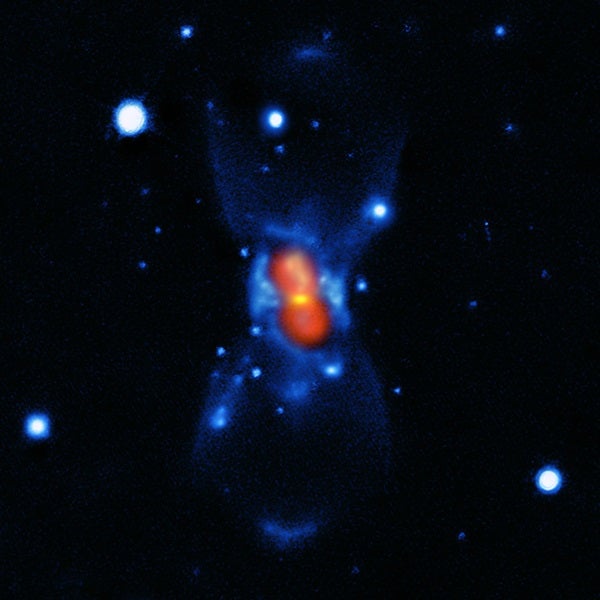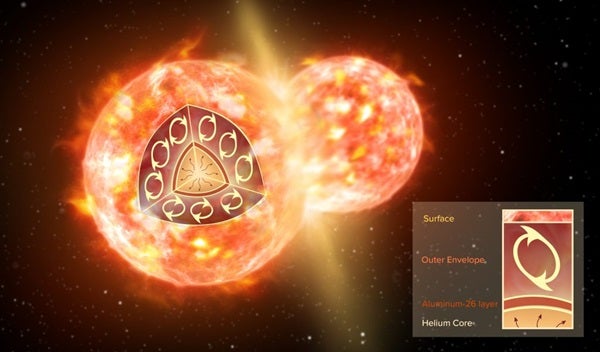What’s making aluminum-26?
Decades ago, astronomers found a unique radioactive signature when observing the sky with a gamma-ray telescope. They found the signature of beta decays (a type of radioactive decay that emits an electron) of an isotope of aluminum, 26Al, sprinkled across the sky. Ever since, astronomers have been searching for the source of the aluminum, but due to the resolution of available instruments, they were unable to identify it. Now, with the improved resolution of the Atacama Large Millimeter/submillimeter Array and the Northern Extended Millimeter Array, a team of researchers has pinpointed one source producing the aluminum: CK Vulpeculae, the merger remnant of the nova spotted in 1670.
“Mergers of normal stars have never been considered before as sources of aluminum-26,” said Tomek Kaminski, lead author on the paper, published July 30 in Nature Astronomy, and astronomer at the Harvard-Smithsonian Center for Astrophysics. “The usual suspects were massive Wolf-Rayet stars, asymptotic giant branch stars, and classical novae.”
The nuclear reactions that create this isotope of aluminum are well known. However, where it is produced, and how it is released into interstellar space, are more open questions. Astronomers know aluminum is not produced in Sun-sized stars, except for at the end of their lifetime. When a star runs out of hydrogen at its core, it starts burning the remaining hydrogen in an outer shell. At this stage, the star enters the red giant branch and begins to produce a small amount of the aluminum isotope. Given the amount of the isotope found in CK Vulpeculae, the researchers believe one of the stars was in this phase of its life when the two collided.
The aluminum isotope has been found throughout the galaxy in higher levels than can be explained by this type of stellar merger alone. Indeed, if this were the only explanation, two small stars would have to collide 1,100 times per year to produce the aluminum seen, but in reality, such collisions usually occur only once or twice a decade. The additional aluminum is thought to be produced in other types of novae and supernovae as well as in larger stars.
“Other stellar-merger remnants similar to CK Vulpeculae do not seem to produce this rare isotope,” Kaminski said. However, he noted it could be that the other stellar-merger remnants, which are much farther away, have not yet been looked at in enough detail to see the aluminum signature. They are also much younger — only a few decades old — so a signature may be too close to the remnant to be seen yet. While the results have confirmed one source of radioactive aluminum, they continue to search for more.
“We plan to observe surroundings of massive stars to see if, or which of them, produce aluminum-26,” Kaminski said. “The gamma-ray observations suggest it is the massive stars that are the most efficient producers of aluminum-26. We are going to test whether that is really the case.”

What we can learn from the life cycles of stars? Astronomy’s free downloadable eBook, Stars: The galaxy’s building blocks contains everything you need to know about how stars live, die, and change their galactic homes over time.











